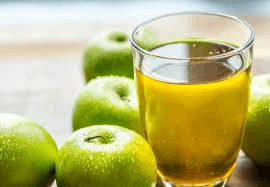The Polish Wine Council has just asked the Ministry of Finance and the Ministry of Agriculture to start work on a coordinated program that would enable the creation of an appropriate legal environment for the cider. If nothing will change in the legislation the industry will have serious problems in few years.

The lack of advertising opportunities, huge competition from the beer market and excise duty - these are the biggest problems of Polish cider producers with which they have been struggling for years. The cider market is under very strong pressure from the beer market.
Breweries offer aromatized beer, with a taste similar to cider, which, however, is subject to a lower excise duty than cider, and additionally they have the option of advertising it. Obtaining cider from apple juice is much more expensive than producing beer with a cider flavor, which also does not allow for direct competition with this category.
The consumer is not able to recognize the difference between beer and cider, because there is still little knowledge of consumers about cider - mainly due to the lack of advertising opportunities.
According to the Polish definition, cider is an alcoholic drink with an alcohol content of 1.2-8.5%. It is produced by yeast-led alcoholic fermentation from the setting, in which the main ingredient is apple juice. Polish ciders have a higher share of apple juice than ciders produced in the vast majority of European countries - producers are obliged to do so by regulations established in Poland.
Beeld: © Murawska
In addition, cider has significant restrictions in terms of recipe. - Combining cider with other fruits such as strawberries, cherries or chokeberry, which would make the cider product range more attractive, is subject to qualifying the product to a higher excise duty rate, reserved for wine, and thus makes such undertakings unprofitable.
Cider producers agree: coordinated action is needed from the Ministry of Agriculture and the Ministry of Finance. The development and promotion of the cider market based on the use of Polish apples should be part of the fruit growing development strategy. Unfortunately, despite repeated declarations and announcements of the authorities to reduce the excise duty rate on cider to zero, nothing has been done on this topic.
Beeld: © Murawska
Then and now
The real boom began in 2013 on the moment of Russian embargo on Polish apples. Cider sales grew rapidly. Three years later, there was a stagnation, and in 2017, 2018 and 2019 - significant, regular declines. This year is also not optimistic. - The coronavirus epidemic had a particularly negative impact on small-capacity ciders, as they were intended to be dedicated to outdoor events or barbecues. Due to the social distance, we now have much less of these opportunities, and the sale of cider has significantly decreased.
In the world
Forecasts presented by market analysts show that cider is currently and will remain one of the fastest growing alcohol categories in the world and will remain in the coming years. Globally, by 2026, growth is estimated of around 6% year on year.
Domestic market
Meanwhile, the domestic cider segment records dramatic declines. Last year, only approx. 6 million liters were produced domestically, while in 2015 it was about 12 million. The value of the product in the last year (July 2019- June 2020) was only 54 mln pln. It is a decrease of 14% ompared to previous year.
Source: SadyOgrody, Gazeta Wyborcza